Hola Tesoro Hombres
Thanks Roy Oro for your astute retort, appreciate your postiton , albeit the easier one to take
ie. easier to deny than to prove- non the less I shall soldier on....
Regarding your statement that , an artifact or coin from the Templar's would help and go a long way
to prove the point of the existence of the KT in America... consider this then my friend....What coins would
have been in their pocket? Would they not have been Phoenician coins Sir? Would it not make
sense, since I have not seen any evidence of actual Templar coins?
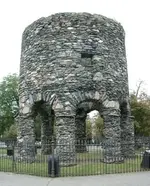
With regard to the Newport or Sinclair Tower I think one ASTOUNDING overlooked artifacts is the
Westford Knight effigy, located near the Tower..it stands in quiet dignity - memorializing Sir Gunn
and his demise at Prospect Hill in the 14th Century...consider this rather lengthy abstract, encluded
here in it's entirety because of its import and it's impact....
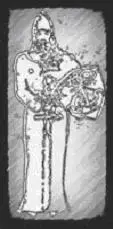
http://www.danicadhondt.com/newslet/06_1/newslet06_1H_templars.html
"For years I had read about the two-story, round, stone tower, with eight arches on the lower level, that was designed with a striking resemblance to the Church of the Holy Sepulchre in Or
phir, [anyone else amazed by the appearance of this word PHI in what seems a linguistic connection to the word Ophir-brackets mine] Orkney, off the coast of Scotland, in books about little-known early voyages to North America.
The architecture of this structure had been identified as certainly that of Northern Europe in the Middle Ages, and some said the stonework was distinctly Scottish, as all of its measurements were based on the Scottish “Ell Stick,” a standard of measurement used in Ancient Scotland. The speculation was that this tower had been erected, possibly as an observatory (as the windows demonstrate astronomical alignments) but perhaps as a watchtower or lighthouse of sorts, by members of an expedition that had come to the east coast of Canada, and the northeastern coast of what is now the United States as far back as 1398 A.D.
The leader of the expedition is supposed to have been Prince Henry Sinclair of Scotland, Norway and Orkney. It was his family who are reputed to have given safe haven to the disbanded Knights Templar, when they arrived on the west coast of Scotland in the early fourteenth century. It was this same family, who, about 50 years after the time of Henry Sinclair, built the famous Rosslyn Chapel, in the little village of Roslin, just south of Edinburgh, and close to Rosslyn Castle, the family seat at the time.
The Sinclair who arranged for the chapel’s construction was Sir William Sinclair, who is also credited with having instituted Freemasonry, and having been its first Grand Master. Readers of The Da Vinci Code will remember Rosslyn chapel as one of Dan Brown’s choices for the possible resting place of the remains of Mary Magdalene, Brown’s “Holy Grail.”
Rosslyn Chapel has long attracted enthusiasts of unsolved mysteries with its carvings of plants such as maize and aloe cactus – plants native to the North American continent and supposedly unknown in Europe at the time of the chapel’s construction (although aloe plants are also indigenous to Africa).
Further evidence for the Sinclair voyage is the log book of the Zeno brothers, Venetian seafarers, who were hired to “take a certain northern prince” to lands far to the west in the northern Atlantic. Rough maps drawn by members of the Zeno voyage depict the coastline of Nova Scotia and New Brunswick, detailing such features as a “smoking hole” and a “spring of pitch” – natural geological features known today to exist in the area.
In fact Nova Scotia is home to the only open pitch deposit on the Atlantic coast of North America. Archaeologists in this part of eastern Canada have discovered the ruined foundations of stone buildings that could easily date from the fourteenth century and the oral history of the local Indians, the Micmacs, includes the visit of a light skinned man they named Glooscap, who interacted with their ancestors, taught them many new things, including how to fish with nets, and then left them by traveling southward, which would of course be in the direction of Massachusetts and Rhode Island. Today references to “Glooscap” are to be found throughout Nova Scotia (which, of course suspiciously means New Scotland) and the Micmacs still celebrate Glooscap in special festivals every year."
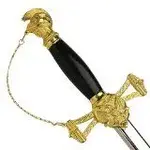
The Westford Knight
The following information is taken from the brochure "The Remarkable Prince Henry Sinclair". The brochure itself is based on an article entitled Was Glooscap a Scot? reprinted as Yours Aye, August 1988, giving credit to Atlantic Insight of June 1983.
Born in Scotland in about 1345 A.D. Henry Sinclair became Earl of Rosslyn and the surrounding lands as well as Prince of Orkney, Duke of Oldenburg (Denmark), and Premier Earl of Norway. In 1398 he led an expedition to explore Nova Scotia and Massachusetts. This was 90 years before Columbus "discovered America"!
Prince Henry Sinclair was the subject of historian Frederick J. Pohl's Atlantic Crossings Before Columbus, which was published in 1961. Not all historians agreed with Pohl, but he made a highly convincing case that this blond, sea-going Scot, born at Rosslyn Castle near Edinburgh in 1345, not only wandered about mainland Nova Scotia in 1398, but also lived among the Micmacs long enough to be remembered through centuries as the man-god "Glooscap".
Henry Sinclair's ancestry was a mixture of Norman, French, Norwegian, and Scottish. The first Sinclair known in what is now the United Kingdom had arrived with William the Conqueror in 1066. Sinclair's grand-father, a friend of Robert the Bruce, King of Scotland, died fighting the Saracens in Spain in 1330. His father, Sir William Sinclair, also died in battle while fighting the Lithuanians from a base in Prussia in 1358. Henry was 13 at the time. He was trained in martial exercises with sword, spear, bow and arrow. He spoke Latin and French, and became a knight at the age of 21 years. His first wife, who died young, was the great-grand-daughter of King Magnus of Sweden and Norway. His second wife, Janet Holyburton of Direton Castle, bore him four children.
Sinclair was installed as the Earl of Orkney and Lord of Shetland when he was only 24, and held his appointment at the pleasure of King Hakon VI of Norway. As "jarl", he was next to royalty. He had authority to stamp coins, to make laws, remit crimes, wear a crown, and have a sword carried before him. He had already been rewarded by Kind David of Scotland for a successful raid into England, with the title of Lord Sinclair and the position of Lord Chief Justice of Scotland. Sinclair excelled in a furious time.
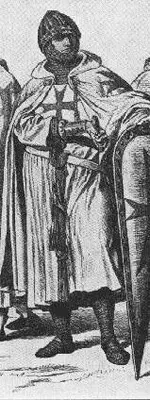
Sinclair happened to be in the Faeroe Islands, which were part of his earldom in 1390, when he heard that a ship had been wrecked and, since shipwrecks were fair game for pillage at the time, the local fishermen were attacking the crew. Sinclair rescued the mariners, and discovered they were Venetians. Their commander, Nicolo Zeno, was a brother of the most famous admiral of the time, Carlo Zeno. Sinclair hoped to dominate the northern seas, and promptly appointed Nicolo commander of his fleet. After Nicolo's death, Sinclair appointed another Zeno brother, Antonio, as fleet commander. Nicolo and Antonio used to write to Carlo "The Lion" in Venice, and this correspondence was published in 1558 by a great-great- great-grandson of Antonio. Historians call it the Zeno Narrative, and it is a basic source for Pohl's intriguing account.
This Zeno Narrative told about a survey to make a map of Greenland in about 1393; it was conducted by Nicolo Zeno, and later by Prince Henry's ships. This Zeno Map of the North proved to be the most accurate map in existence for the next 150 years!
Not only did the Zeno Map chart the sea with uncanny precision, it also showed certain landmarks. For example, it illustrated two cities in Estotilanda (Nova Scotia), possibly founded by Sinclair at Louisburg Harbor and St. Peter's. A castle or fortification was shown. There is speculation that Zeno based his map upon a much more ancient map, coming from the Templars in the Middle East, carried in secrecy by them for safekeeping in Rosslyn Castle, until Price Henry commissioned its update by Zeno.
The Zeno Narrative reported that as far back as 1371, four fishing boats (the fishermen were Sinclair's subjects) were blown so far out to sea that they eventually came ashore on land that was probably Newfoundland. They spent more than twenty years on the island, and apparently on the lands to the south, and then one of them made contact with some European fishermen and managed to return to the Faeroes. Sinclair decided to explore these new lands and set sail around April 1, 1398. His fleet consisted of 13 little vessels, two of them driven by oars. The Zeno Document suggests he tried to land at Newfoundland but was driven off by natives, and then sailed into Chedabucto Bay. It is believed he dropped anchor on the first of June in Guysborough Harbor.
Sinclair then sent 100 soldiers to explore the source of smoke they saw swirling above a distant hill. The soldiers reported back that the smoke was a natural thing proceeding from a great fire in the bottom of a hill, where a spring, from which issued a certain substance like pitch, ran into the sea. Thereabouts dwelt a great many people, half-wild, and living in caves. They were of small stature and very timid. Geographical detective work, archaeology, modern science and various documents have pinpointed the burning hill as the asphalt area at Stellarton, about 50 miles direct from the head of Guysborough Harbor.
The Scots liked the soil, the rivers, even the air, and wanted to establish a settlement. A portion of his party returned home, but he kept some men with him together with two oar-powered boats, which were good for exploring rivers and coasts. He took them through the Strait of Canso to meet the Indians at Pictou.
Apparently he persuaded the Micmacs to act as guides in his exploration. Sinclair may have travelled to Annapolis Basin and across the Micmac canoe route to Liverpool. By October, he was back on Green Hill, southwest of Pictou harbor, to attend a gathering of the Micmacs. " 'Twas the time for holding the great and yearly feast with dancing and merry games" His winter campsite was on the high promontory of Cap d'Or, overlooking Advocate Harbor. During the winter, the expedition built a ship and, when spring arrived, Sinclair sailed away from Nova Scotia.
They travelled southward, perhaps carried by a northeaster, to the New England Coast, just north of Boston. The party landed and spent the winter, living peacefully with the Indians. To the west they could see a hilltop from which the Indians frequently sent smoke signals. Accompanied by his 100 men, Henry marched inland to the summit of this hill, now called Prospect Hill, located in Westford, Massachusetts. It is 465 feet in altitude and afforded a good view in all directions.
While at this area, one of Prince Henry's loyal attendants by the name of Sir James Gunn, also from Scotland, died. In memory of the lost companion, the party carved a marker on the face of a stone ledge. It consisted of various sizes of punched holes, which depicted a Scottish knight, with a 39 inch long sword and shield bearing the Gunn Clan insignia. The punch-hole method of carving involved making a series of small impressions with a sharp tool, driven by a mallet. Where glacial scratches or rock colorations existed, they were incorporated into the man-made design.
Some holes were larger and deeper than others, probably due to the dulling of the carver's tool and centuries of weathering. In the words of Frederick Pohl, "the following are undeniably man-made workings: the pommel, handle, and guard of the sword; below the guard the break across the blade that is indicative of the death of the sword's owner; the crest above the pommel; a few holes at the sword's point; the punched-hole jess lines attached to the legs of the falcon; the bell-shaped hollows; the corner of the shield touching the pommel; the crescent on the shield; and the holes that form a decorative pattern on the pommel." Now weatherworn and faint, one can see just enough of the carving to visualize the rest of it.
Of course, there have been many investigations to verify the authenticity of this carving.
There remains little doubt that this memorial is not a hoax, nor some Indian marking, but rather, the true monument created by Prince Henry Sinclair, nearly 600 years ago!
Well, if one really wants just ONE artifact to prove the existence of the Knights Templar in America, here it is beyond the Shadow of a Doubt, as it is Written in Stone! It not OUTSIDE the ability of the Knights and Sinclair, It is within the Time line of the area of concern, It is mute testamony of their precsence, I only am trying to bring voice to this Mute Knight and proclaim his Sacrifice as evidence of that the Presence of the Ancient Ones in America WERE the Knights Templar!
I rest my case on this point, you may cross examine Sir!
and I thank you in advance for your reply!
auriferiously
rangler
"
Non nobis, Domine, no nobis, sed nomini tuo da floriam!
[/size]
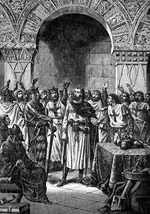
Your Name grant glory, Not unto us, o Lord, not unto us,
but unto your name grant glory!
.....the Motto of the Knights Templar



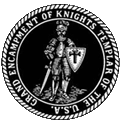






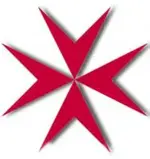
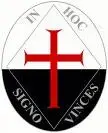

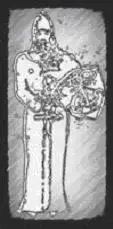
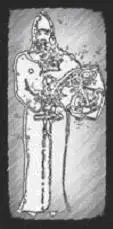
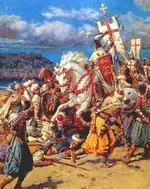
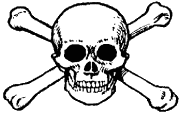
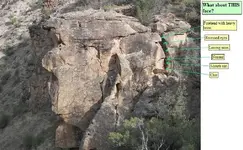


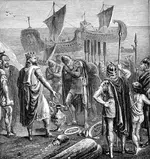
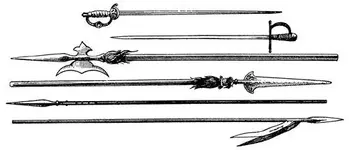
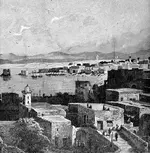
 But, again, I degress.
But, again, I degress.